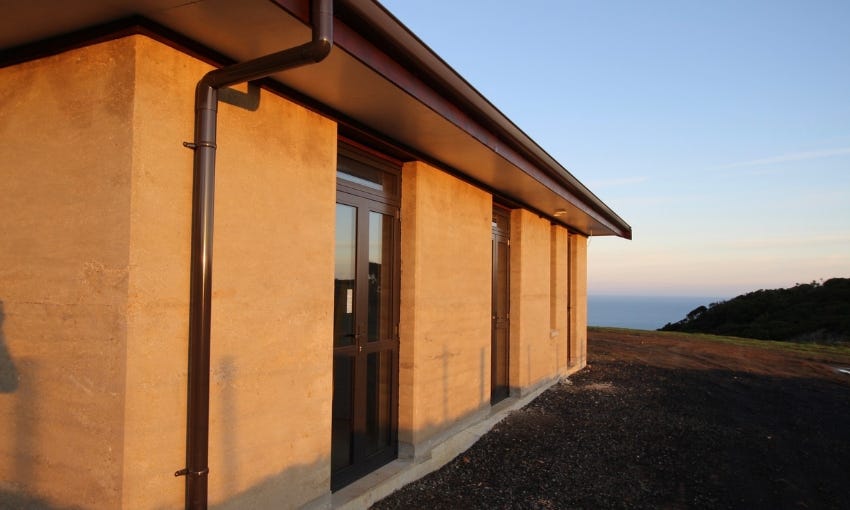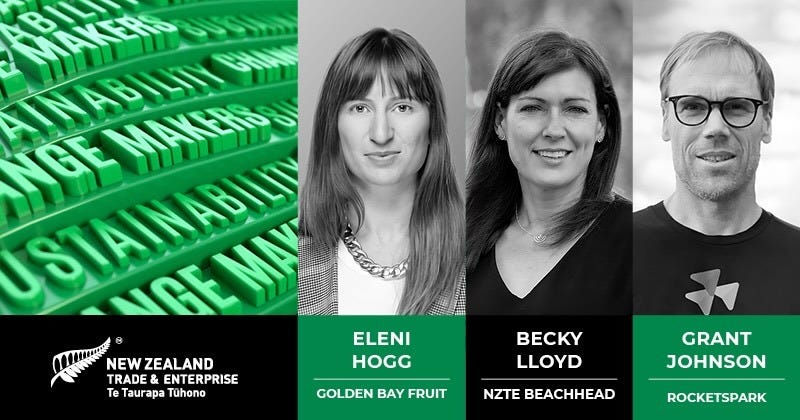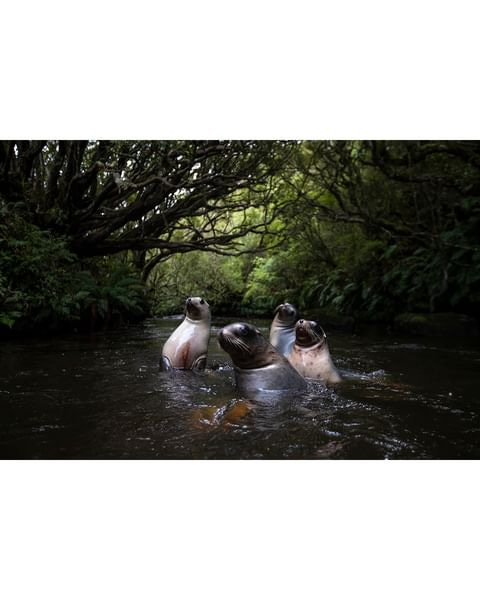Put down the hammer and pick up the rammer
One builder’s quest to find a culture of sustainability in construction.
Kia ora! Welcome to Future Proof. Thanks for joining me. This week: eating insects, and stunning wildlife photography. But first: homes made of earth.
A rammed earth home in Piha. Image credit: Terra Firma Earth Building Company.
“Have you ever built a sandcastle?” asks Paul Geraets, founder of rammed earth building company Terra Firma. “Everybody has. Rammed earth is the same principle.”
Rammed earth is an ancient construction method, using locally sourced soil tamped into layers akin to manmade sedimentary rock. It’s pretty uncommon in New Zealand – less than 1% of all houses are earth buildings. But earth offers an alternative material to timber-steel-concrete, with sustainability creds that Geraets reckons make it worthy of more consideration.
As a young construction worker, Geraets wanted to feel more connected to a culture of sustainability. So when someone gave him a pamphlet on rammed earth construction in 1989, he knew he’d found his path. More than 30 years on, he’s been involved in constructing around 100 rammed earth homes in New Zealand, and has recently commissioned a book encouraging builders to “put down the hammer and pick up a rammer”.
“To me – and this has always been my philosophy – if we’re talking about ethics and sustainability, then we’re talking about durability,” says Geraets. “The houses we build should be fit-for-purpose for a long time, whereas the type of construction we’re doing at the moment isn’t designed to last long.” Rammed earth houses, on the other hand, have a long life expectancy – extending into hundreds of years.
One of the other environmental benefits of a rammed earth structure is the walls’ ability to “breathe” and regulate temperature naturally, as heat (or cool) is absorbed, stored, and percolates slowly through the thick walls. “These walls have the ability to store temperature, whether it's warm or cold, and when you combine that with insulation, there is the opportunity to reduce energy costs significantly,” says Geraets.
Traditional rammed earth houses, constructed from soil sourced on site (or as close by as possible) also boast low embodied energy – that is, it doesn’t take much energy to make rammed earth (just quite a bit of labour).
However, modern methods require use of a cement additive to beef up strength and meet building codes, which adds to the material’s carbon footprint. How much bigger that emissions footprint is depends on how much cement is added, and whether the embodied carbon of cement-stabilised rammed earth stacks up against concrete or other materials is a topic of debate. Geraets acknowledges that cement is a “high-carbon component” and is hopeful that in future, alternative, lower carbon stabilisers will be developed.
Plus, it’s not so bad if you make sure a house stays standing for a really long time, Geraets reckons, “Ground zero for sustainability is durability.”
Take a proactive approach to measuring your carbon emissions.
Join our free Sustainability Changemakers webinar on Wednesday 25 September to understand how to measure your carbon footprint, so you can stay ahead of global reporting demands. Industry expert Becky Lloyd will explore various emissions measurement approaches, while Eleni Hogg and Grant Johnson will share real-world experience and practical advice.
Register here to secure your free spot. (sponsored)
Will we ever get an appetite for insects?
Insects are a nutritious source of farmed protein, and eating them in place of traditional animal proteins could slash the environmental impact of our eating habits. So, aside from the odd huhu grub on a hike, why don’t we eat insects? Shanti Mathias embarks on an insectile odyssey, discovering that Māori traditionally ate as many as 15 insect species, and getting the inside scoop on edible insects in Aotearoa today.
Growth of what and for whose benefit?
“People need to understand that ‘growth’ is not the same as social progress,” says Jason Hickel, author of Less is More. “Every time a politician says they want more economic growth, we need to ask: growth of what and for whose benefit?” The Guardian features the post-growth movement, which says we need to rewire economics, explaining how it might work in practice, and what the global south’s developing countries think of the idea.
Building better goal posts for emissions accounting
Can accountants influence the composition of our atmosphere? In this episode of When the Facts Change, Bernard Hickey talks with Dr Amelia Sharman from the External Reporting Board, about how the XRB’s new standards for emissions accounting might just change the world.
Climate change, community and kai
Reclaiming the relationship between people and their local food sources is central to the concept of kai sovereignty. But what happens when a major weather event wipes out much of a region’s food production? Two University of Otago researchers are embarking on a major project to find out how Cyclone Gabrielle impacted the mental health of people of Te Tai Rāwhiti Gisborne, through a lens of food security and climate change.
Find out more about their research here. (sponsored)
More stories
A landmark ruling from a top South Korean court: the country’s climate change law does not protect basic human rights and lacks targets to shield future generations. (Reuters)
Climate action is essential financial strategy: a study examining 20 years of data from more than 9,000 firms across the Asia-Pacific finds that better carbon management is linked to lower financial risk. (The Conversation)
New Zealand’s first national tyre recycling scheme is now underway. (RNZ)
An open letter from Pacific Island Warrior Joseph Zane Sikulu to Azerbaijan, host of the upcoming climate summit: “Your president, Ilham Aliyev, called fossil fuels ‘a gift from the gods’. For us in the Pacific, such words aren’t just careless – they’re cruel.”
Pressure to secure Kiwis the “right to repair” mounts, with a petition of 21,000 calling for repairability labels presented to Parliament. (1News)
Renewables can meet New Zealand’s future energy demands, writes Alan Brent, professor and chair in sustainable energy systems at Victoria University of Wellington.
Reflooding New Zealand’s peat soils could slash emissions – but large parts of drained bog are currently used for dairy farming, RNZ’s climate correspondent Eloise Gibson reports.
"As a New Zealander living in Sydney, The Spinoff helps me to feel in touch with what's happening back home. There's a great breadth to the content – and the enthusiasm from your contributors is palpable. I feel happy and proud to be a member." – Ian, Sydney
Whether living here or abroad, if you value our work please show your support by becoming a member today.
To finish this edition, it’s photography awards season! Last week, New Zealand photographer Richard Robinson won the Threatened Species category at the Australian Geographic Nature Photographer of the Year 2024 awards with ‘Teen spirit’, a portrait of juvenile New Zealand sea lions on the Auckland Islands. Plus, the UK-based Wildlife Photographer of the Year competition revealed a sneak peek at the top entries, and New Zealand Geographic has announced the finalists for Photographer of the Year here in Aotearoa, with voting open for people’s choice.
Say cheese,
Ellen
Future Proof is looking for a sponsor!
Connect your brand with an insightful exploration of environmental news, reaching influential readers committed to sustainability and staying informed about the state of our natural world. Contact commercial@thespinoff.co.nz to learn more.
Got some feedback about Future Proof or topics you’d like covered? Get in touch with me at futureproof@thespinoff.co.nz














Rammed earth is an exciting option. There are NZ standards (NZS4298 and NZS4299 not requiring specific design) and its not always necessary to use cement stabiliser. Steel reinforcing has high embedded emissions, but flax might do the job in a low earthquake zone.
The free Sustainability Changemakers webinar link doesn't seem to be working.